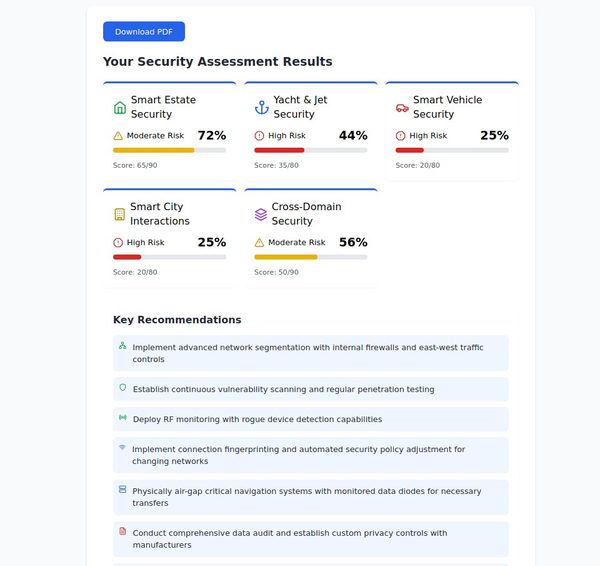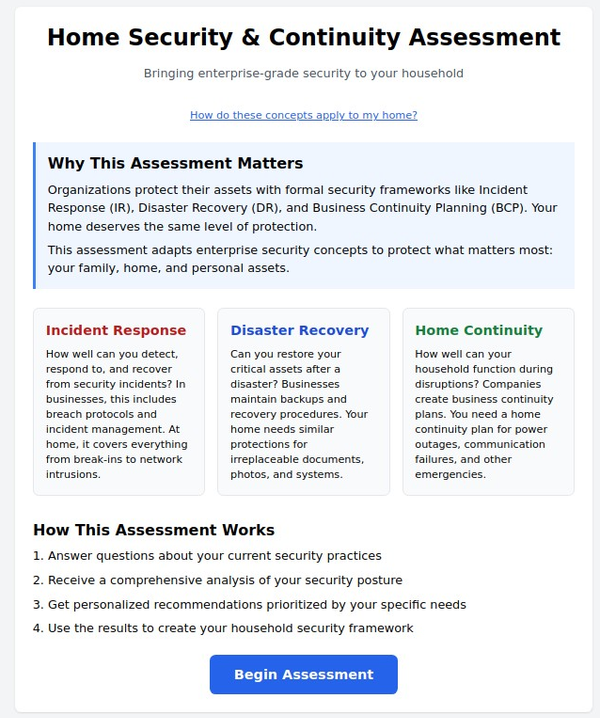2024 Smart Home IoT Devices

The Landscape of the Average Smart Home User in 2024
Introduction
As we step into 2024, the adoption of smart home technology has become more widespread and integrated into the daily lives of consumers. The average smart home user today leverages a myriad of interconnected devices to enhance convenience, security, and energy efficiency. However, this increased connectivity also brings forth significant data privacy concerns that need to be addressed.
Smart Home Ecosystem
The typical smart home in 2024 includes a range of devices such as:
- Smart Speakers and Displays: Devices like Amazon Echo Show and Google Nest Hub are central to controlling other smart devices, playing media, and managing schedules through voice commands.
- Security Systems: Smart locks, cameras, and alarm systems provide enhanced security. Products like Ring Alarm Pro and SimpliSafe offer comprehensive solutions.
- Energy Management: Smart thermostats (e.g., Ecobee SmartThermostat) and smart plugs help users monitor and reduce energy consumption.
- Appliances: From smart refrigerators to coffee makers, kitchen and household appliances now come with connectivity features that allow for remote control and automation.
- Entertainment: Smart TVs and streaming devices have revolutionized home entertainment, offering seamless access to content from various providers.
Daily Interactions
Smart home users interact with their devices through a combination of voice commands, mobile apps, and automated routines. For instance, a typical morning might involve:
- Wake-Up Routine: The smart thermostat adjusts the temperature, the coffee maker starts brewing, and the smart lights gradually brighten.
- Security: The smart lock ensures the home is secured as users leave, and cameras activate to monitor the premises.
- Energy Efficiency: Throughout the day, smart plugs turn off unused devices, and the thermostat adjusts settings based on occupancy sensors.
Data Privacy Concerns
With the convenience of smart home technology comes significant data privacy challenges. Key concerns include:
- Data Collection: Smart home devices collect vast amounts of data, including audio recordings, video footage, usage patterns, and personal preferences. This data is often stored on cloud servers, raising concerns about unauthorized access and data breaches (TechRadar) (Enterprise Technology News and Analysis).
- Third-Party Access: Many smart home systems integrate with third-party services, which can lead to data sharing with multiple entities. Users may not always be aware of how their data is being used or who has access to it (Trend Micro).
- Device Vulnerabilities: As seen with the Mirai botnet, IoT devices often have weak security measures, making them susceptible to hacking. Compromised devices can be used to launch attacks or gain unauthorized access to personal data (TechRepublic).
- Surveillance Risks: Devices with cameras and microphones, such as smart speakers and security cameras, pose potential surveillance risks. Unauthorized access to these devices can lead to invasive monitoring of personal spaces (Enterprise Technology News and Analysis).
- Regulatory Compliance: The regulatory landscape around data privacy is evolving. Users need to be aware of the data protection laws in their region and ensure their devices and service providers comply with these regulations.
Mitigating Privacy Risks
To protect their privacy, smart home users should adopt the following measures:
- Change Default Passwords: Always replace factory default passwords with strong, unique ones.
- Enable Two-Factor Authentication: Use two-factor authentication for accessing smart home systems and related accounts.
- Regular Updates: Keep firmware and software of all smart devices updated to protect against known vulnerabilities.
- Review Privacy Settings: Regularly review and adjust privacy settings on all devices and services.
- Use Local Storage: Where possible, opt for local storage of data over cloud storage to reduce the risk of remote breaches.
Conclusion
The average smart home user in 2024 enjoys unparalleled convenience and efficiency through interconnected devices. However, this connectivity brings substantial data privacy concerns that need proactive management. By understanding the risks and implementing robust security measures, users can enjoy the benefits of smart home technology while safeguarding their personal data.
Here are some of the top smart home items and gadgets for 2024:
- Smart Speakers and Displays:
- Amazon Echo Show 15: A large, wall-mountable smart display with Alexa integration.
- Google Nest Hub Max: A smart display with Google Assistant, video calling, and home control features.
- Smart Security Systems:
- Ring Alarm Pro: A comprehensive home security system with an integrated Eero Wi-Fi 6 router.
- SimpliSafe Wireless Home Security System: A customizable and easy-to-install security system with professional monitoring options.
- Smart Thermostats:
- Ecobee SmartThermostat with Voice Control: Features Alexa built-in, smart sensors, and energy-saving capabilities.
- Google Nest Learning Thermostat: Learns your schedule and preferences to optimize heating and cooling.
- Smart Lighting:
- Philips Hue Smart Bulbs: A range of smart bulbs that can be controlled via app or voice, with customizable colors and scenes.
- LIFX Wi-Fi Smart LED Bulbs: High-quality smart bulbs with vibrant colors and no hub required.
- Smart Locks:
- August Wi-Fi Smart Lock: Easily attaches to your existing deadbolt and offers remote control via the app.
- Yale Assure Lock SL with Z-Wave: A sleek, key-free smart lock that integrates with various smart home systems.
- Smart Home Hubs:
- Samsung SmartThings Hub v3: Connects and controls a wide range of smart home devices.
- Amazon Echo 4th Gen: Doubles as a smart home hub with Zigbee and Bluetooth Low Energy (BLE) support.
- Smart Appliances:
- LG InstaView ThinQ Refrigerator: A smart fridge with a transparent door, voice control, and inventory management.
- Samsung Smart Oven: Features Wi-Fi connectivity, voice control, and a range of cooking modes.
- Smart Plugs:
- TP-Link Kasa Smart Plug HS300: A power strip with six smart outlets and surge protection.
- Amazon Smart Plug: A simple plug that allows you to control devices with Alexa.
- Robot Vacuums:
- iRobot Roomba j7+: Features advanced mapping, obstacle avoidance, and self-emptying capabilities.
- Ecovacs Deebot N8 Pro+: Offers powerful cleaning, advanced mapping, and a self-emptying station.
- Smart Home Health Devices:
- Withings Body Cardio Scale: Measures weight, body composition, heart rate, and vascular age.
- Google Nest Protect: A smart smoke and carbon monoxide detector with advanced sensors and alerts.
These items and gadgets reflect the latest advancements in smart home technology, enhancing convenience, security, and energy efficiency.
In 2024, several significant cyberattacks and exploits have targeted smart home devices, emphasizing the need for robust security measures.
- Increase in IoT Attacks: Kaspersky's research highlights a dramatic increase in cyberattacks on IoT devices, with over 105 million attacks detected in the first half of the year. Many of these attacks exploit weak security configurations and default passwords on devices such as routers and DVR security cameras. Common malware families like Mirai and Nyadrop are frequently used to create botnets that can take control of compromised devices (TechRadar).
- NUIT Attacks: Researchers have demonstrated a novel attack method called NUIT (Near-Ultrasound Inaudible Trojan). This attack uses the speaker of one device to exploit the microphone and voice assistant of another device, such as a smartphone or smart speaker. These inaudible attacks can issue commands to devices without the user's knowledge, potentially disarming security systems or accessing sensitive information (Enterprise Technology News and Analysis).
- General Smart Home Vulnerabilities: Smart home devices, including smart locks, speakers, and even smart coffee makers, are susceptible to various attack scenarios. Poor configuration and outdated firmware can allow hackers to gain control, potentially locking residents out, issuing unauthorized commands, or causing devices to malfunction (Trend Micro).
- Advanced Persistent Threats (APTs): APT groups are increasingly targeting smart home devices as part of broader cyberespionage activities. These threat actors use sophisticated techniques, including leveraging generative AI for spearphishing and automating information collection from victims' online presence. This trend is expected to continue as cybercriminals find new ways to exploit vulnerabilities in smart home ecosystems (TechRepublic).
These developments underscore the importance of securing smart home devices through measures such as changing default passwords, keeping firmware updated, and employing robust security solutions.
Case Study: The Mirai Botnet Attack on IoT Devices
Background
The Mirai botnet is one of the most notorious cyber-attacks involving IoT devices. First discovered in 2016, it primarily targets IoT devices like IP cameras, routers, and DVRs by exploiting default credentials.
Attack Vector
Mirai works by scanning the internet for IoT devices that use factory default usernames and passwords. Once these devices are identified, the malware attempts to log in using these credentials. If successful, the device is infected and becomes part of the botnet, which can be used to launch Distributed Denial of Service (DDoS) attacks.
Exploits and Vulnerabilities
- Default Credentials: Many IoT devices ship with factory default usernames and passwords, such as "admin/admin" or "user/user." Users often neglect to change these settings, leaving devices vulnerable.
- Lack of Regular Updates: IoT devices often do not receive regular firmware updates, making them susceptible to known vulnerabilities.
- Weak Security Protocols: IoT devices typically have weaker security protocols compared to traditional computing devices, making them easier targets for attackers.
Incident
On October 21, 2016, the Mirai botnet was used to launch a massive DDoS attack on Dyn, a major DNS provider. The attack caused widespread internet outages, affecting major websites like Twitter, Netflix, and Reddit. The attack was notable for its scale, reaching traffic peaks of 1.2 Tbps.
Response and Mitigation
- Password Management: Users were advised to change default credentials on their IoT devices to stronger, unique passwords.
- Firmware Updates: Manufacturers were urged to provide regular firmware updates and security patches for their devices.
- Network Security: Implementing network segmentation to isolate IoT devices from critical infrastructure can help mitigate the impact of such attacks.
- User Awareness: Increasing user awareness about the importance of securing IoT devices was highlighted as a critical measure.
Analysis
The Mirai botnet attack underscored the vulnerabilities inherent in IoT devices and the need for better security practices. It revealed the potential scale and impact of IoT-related cyber threats and prompted a reevaluation of IoT security standards.
References
- TechRadar: Highlights the surge in IoT attacks and the role of the Mirai malware family (TechRadar).
- The Register: Discusses innovative attack vectors like the NUIT attack, which exploit the interconnectedness of IoT devices (Enterprise Technology News and Analysis).
- Trend Micro: Provides insights into various attack scenarios and vulnerabilities associated with smart home devices (Trend Micro).
- TechRepublic: Explores the broader implications of APTs targeting IoT devices as part of their cyberespionage activities (TechRepublic).
This case study demonstrates the critical need for robust security measures and best practices to protect IoT devices from being exploited in large-scale cyber-attacks.





